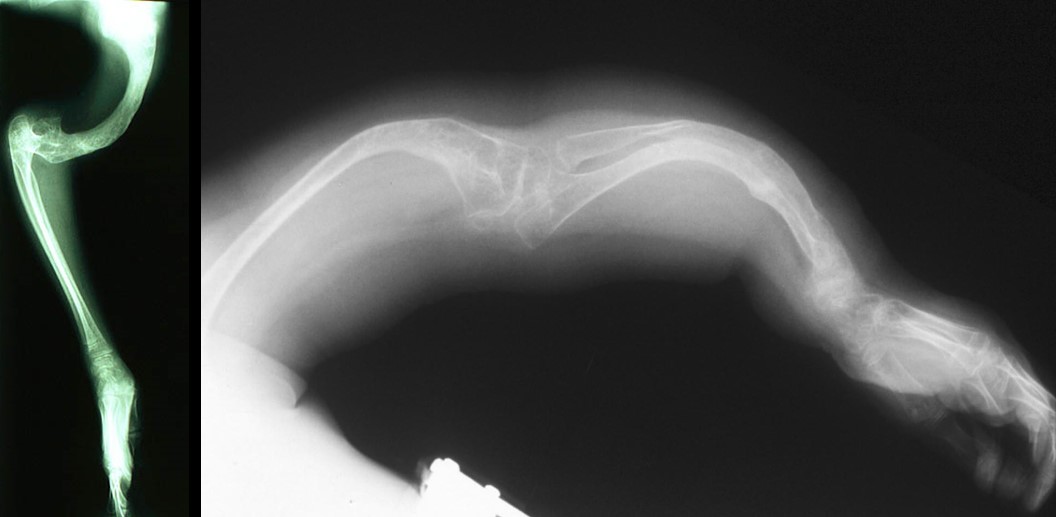Osteogenesis imperfecta
2.3. Upper limbs
Deformities in the upper limbs, often characterised by curvature of the long bones in the arms, typically necessitate surgical intervention less frequently compared to deformities in the lower extremities (see Figure 15). Surgical treatment is reserved for cases where frequent fractures occur and/or when substantial deformities hinder arm mobility required for personal care, wheelchair propulsion, or crutches. In such instances, reconstruction involving osteotomy and the placement of finer rods may be required, considering that the diameter of the arm bones is smaller than that of the leg bones.

One characteristic alteration associated with the type of osteogenesis imperfecta caused by mutations in the IFITM5 gene, is the calcification of the interosseous membrane between the ulna and radius (as explained in Chapter 1). Usually, this membrane remains non-ossified, allowing for unrestricted movement of the forearm. However, when mineralisation occurs, the membrane becomes rigid, impeding the rotational movement of the forearm (pronosupination). Additionally, the ossified membrane exerts a pulling force on the radius, resulting in abnormal positioning and potential dislocation of the bone. This leads to a deformity of the forearm (refer to Figure 16). Generally, this alteration does not require treatment. However, in cases of pronounced deformity, resection (cutting) of the protruding end of the radius may be considered to reduce the severity of the deformity.